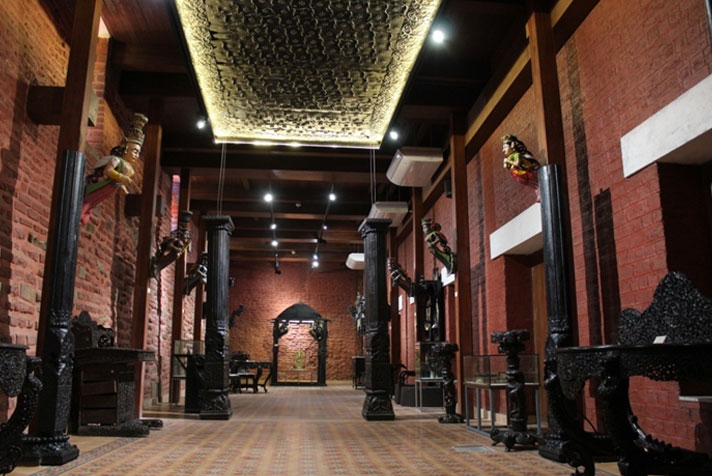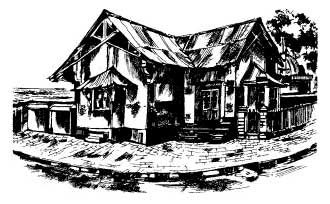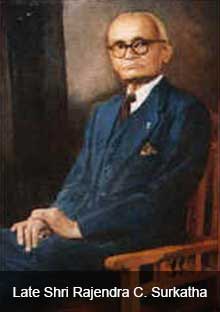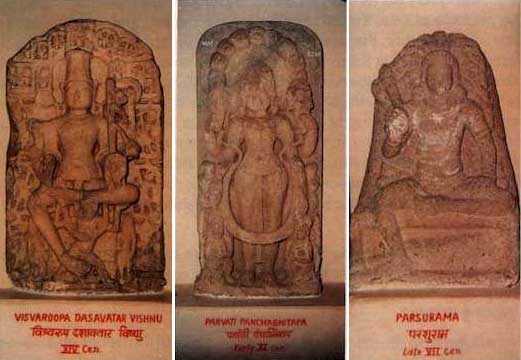Museum

The Collection of Sardar Vallabhbhai Patel Museum is available for visit at Historical Fort of Surat.
In India there are more than 900 museums, which includes departmental and University museums. Out of these museums, there are about 62 museums in Gujarat. Sardar Vallabhbhai Patel Museum, a pride possession of Surat Municipal Corporation, turned 132 on 1st February 2022. Museums are “Visual and living history” reflecting all facets of civilization. Very few in the modern society have realized and understood the concept of preservation and conservation of the heritage, which is a part of our history.
Functions and Mission
The Sardar Vallabhbhai Patel museum as seen today, is the result of a growth of several centuries. The main function of the museum during ancient time : few centuries ago was assembling collections, some times using them for research and publication. These objects were also preserved and they were displayed in the museum. The museum is a permanent establishment, administered in the general interest, for the purpose of preservation, studying, enhancing by various means and in particular exhibiting to the public for its delectation and instructive groups of objects and specimens of cultural value. Thus in general, the main three functions are preservation, collection and exhibition of the objects. It is a treasure house of Surat, the Historical city which display attractive art objects representing national Heritage. It is a place where large number of students come from various school, colleges, educational institutions to know the cultural heritage of Surat. For college students it is a research centre where one can come and do research of these objects.
The main aim of the museum is to generate awareness among the general public regarding there own heritage and to secure knowledge, for students in knowing their cultural heritage.
Surat Municipal Corporation was keen to develop a Composite project of Science Centre, Museum, Planetarium, Art Gallery etc., for which the site was selected in citylight area and the stone laying foundation ceremony was done by hon. Chief Minister Shri Narendra Modi and other dignitaries on 10 September 2005.
The major portion of the city was under water due to heavy food in the river Tapi in the month of August 2006 and the Sardar Vallabhbhai Patel Musuem was also very much damaged, 95% of the overall collection was under water. After the flood the museum was brought back to the public on 1st October 2006 with an exhibition on Gandhiji.
In the year 2009 April it was decided that as the Composite project of Science Centre building was ready the museum was closed for the general public and the packing of the museum collection was started and the objects were shifted to the new Museum building and the display of the objects were laid as per the theme.
On 29 November 2009 the hon. Chief Minister Shri Narendra Modi inaugurated the Sciience Centre Surat along with Museum, Auditorium, art Gallery etc. , and on 1st December the whole Composite project was kept open for the public.
The Surat Municipal Corporation has published two booklets on Museum in the year 1990 among which one is in English and other in Gujarati. It gives information in general, regarding the history of the museum, information of few others important objects, how thThe Sardar Vallabhbhai Patel museum as seen today, is the result of a growth of several centuries. The main function of the museum during ancient time : few centuries ago was assembling collections, some times using them for research and publication. These objects were also preserved and they were displayed in the museum. The museum is a permanent establishment, administered in the general interest, for the purpose of preservation, studying, enhancing by various means and in particular exhibiting to the public for its delectation and instructive groups of objects and specimens of cultural value. Thus in general, the main three functions are preservation, collection and exhibition of the objects. It is a treasure house of Surat, the Historical city which display attractive art objects representing national Heritage. It is a place where large number of students come from various school, colleges, educational institutions to know the cultural heritage of Surat. For college students it is a research centre where one can come and do research of these objects. The main aim of the museum is to generate awareness among the general public regarding there own heritage and to secure knowledge, for students in knowing their cultural heritage. Surat Municipal Corporation was keen to develop a Composite project of Science Centre, Museum, Planetarium, Art Gallery etc., for which the site was selected in citylight area and the stone laying foundation ceremony was done by hon. Chief Minister Shri Narendra Modi and other dignitaries on 10 September 2005. The major portion of the city was under water due to heavy food in the river Tapi in the month of August 2006 and the Sardar Vallabhbhai Patel Musuem was also very much damaged, 95% of the overall collection was under water. After the flood the museum was brought back to the public on 1st October 2006 with an exhibition on Gandhiji. In the year 2009 April it was decided that as the Composite project of Science Centre building was ready the museum was closed for the general public and the packing of the museum collection was started and the objects were shifted to the new Museum building and the display of the objects were laid as per the theme. On 29 November 2009 the hon. Chief Minister Shri Narendra Modi inaugurated the Sciience Centre Surat along with Museum, Auditorium, art Gallery etc. , and on 1st December the whole Composite project was kept open for the public. The Surat Municipal Corporation has published two booklets on Museum in the year 1990 among which one is in English and other in Gujarati. It gives information in general, regarding the history of the museum, information of few others important objects, how the reached at the present stage. In general, the progress through a century is described. Simultaneously, along with the booklet a small folder was also published which gives information of the museum. e reached at the present stage. In general, the progress through a century is described. Simultaneously, along with the booklet a small folder was also published which gives information of the museum.
Sardar Vallabhbhai Patel Museum is proud to publish
- Museum Booklet (English & Gujarati) 1990
- Museum Folder (English & Gujarati) 1990
- City Guide Map (English & Gujarati) 2004
- City Gallery Folder (Gujarati) 2004
- Heritage Walk (English) 2004
- Heritage Calendar (Gujarati) 2004
- Picture Post Card (English) 2006
- Heritage Map (English & Gujarati) 2006
- Science Centre Surat Folder 2009
- Heritage Folder 2009
- Science Centre Surat Folder 2010
- City Guide Map 2013
- Heritage Folder 2013
- Diamond Gallery Folder 2013
History of the Sardar Vallabhbhai Patel Museum

Terminologies like AJAYAB GHAR or JADUGHAR were used earlier for museums. But with the advancement of time, the spectrum of the museums has been broadened. In the developed countries, the museums have been ushered into an integrated institution of art, culture and civilization, Every museum has its importance, irrespective of the objects it preserves, However some museums are rated invaluable because of their priceless collections of artistic and unique objects. Such objects have individuality as well as an exclusive value in terms of human associations. The human instinct of creativity, artistic temperament, dexterity, perseverance, sensitivity and creativity have moulded man into artist. He transformed and translated his artistic expressions in different mediums like clay, stone, wood, metal, cloth and paper etc. To preserve, promote and educate the generations, museums have been established all over the world.
Sardar Vallabhbhai Patel Museum, Chowkbazar in the historical city of Surat, though small in size, occupies a unique place in South Gujarat. Its origin dates back to 1890, when the Collector of Surat, Mr. Winchester through his benevolent efforts, organised the museum near Mecca bridge in western corner of the then Ranibaug or Victoria Garden, (which has been renamed as Gandhibaug). The museum was named WINCHESTER MUSEUM. It was then just a monohall structure where few collections (Jariwork, sandalwood, woodwork and metal ware) were displayed. Gradually the philanthropic noble gentry of this prosperous city lent support to enrich the collection to the present status.
While celebrating the centenary year of Surat Borough Municipality in 1952, an exhibition was organised in Sorabji J.J. Training College, Chowkbazar, which got good response. Encouraged by this, the authorities of the Borough Municipality decided to developed Winchester Museum. Shri Rajendra C.Surkatha was appointed as Honorary Curator on 19-10-1953. he took great pains to developed this museum. Gradually the inadequecy of the available space was felt and the museum was sifted to a bigger building, called Leiy Weaving Shade in 1953. in 1956, a bigger planned accommodation, was constructed to house the present museum which was inaugurated on 6-5-1956 by the late Shri Lal Bahadur Shastri, the Union Minister for Railways, who later became the Prime Minister of India. On 24-12-1957 the new museum was christened after the name of Shri Sardar Vallabhbhai Patel, the Iron man of India who hailed from Gujarat. The museum possesses antiquities as well as objects which represent cultures that are disappearing fast. It has preserved evidences of the past occupations, industries, handicrafts, historical personalities, costumes and dresses which can be admired by the generations to come. Thus, the museum is homage to our past, but at the same time, it is there to inspire our future generations.

Sardar Vallabhabhai Patel Museum is a multi-faceted museum, in which one finds articles like traditional textiles, porcelain, glassware, metal ware, paintings, old books, wood carvings, stuffed specimens of animal and birds, marine specimens such as things made of shells, a variety of conches, corals, minerals and precious stones in which the different phases of the moon as well as eclipse appear. Other similar specimens are also exhibited. All such specimens are classified in sections which are allotted one alphabet in order to facilitate easy documentation. (see overleaf).
At present, the museum collection totals to approximately eight thousand five hundred seven specimens, including those received as gift. Some of these gifts are worthy of special mentions, such as the façade of the very old house of the family of Dadawala, in Wadi Falia, adorned with some handsome woodcarving. Similarly, a chariot belonging to the same family, connected with Vaishnav ritualistic traditions of the 17th century, is also a gift. Samples of small porcelain flower-vases bearing human and animal figures were donated by Saraswatiben Sobhagchand Shah. 287 miniature paintings, depicting childhood pranks of Shrikrishna as well as miniature of Okha-haran were donated by the former Mayor of Surat, Shri Navinchandra Kalidas Bharatiya, Prof Chandabhai Amirud-din Muchhala’s beautifully carved wooden writing desk with book self and Dabhoiwals’s excellently carved sofa-sets, dressing tables of wood of the period of East India Company etc. were other gifts to the museum. Ex. Honorary Director Shri, Rajendra C. Surkatha has also donated replica of Ajanta Cave paintings on cloth as well as his own paintings. Tata Trust of Bombay has loaned perpetually lovely porcelain objects. The National Museum, New Delhi, has gifted miniatures in different styles as well as several sculptures.
Being very old, its history is quite interesting. As happens in human life, with the passage of time, this century-old museum has seen and faced ravages of time. In its history, the blows received during the Tapi river floods were the cruelest. Situated in the low-tying area of Chowkbazar, this museum had been the victim of flood for the first time in the year 1959. Again in the year 1968, when nearly ninety percent area of the city was under flood water, the museum was under water for 96 hours, at 3 metre level inside, drenching the rare museum exhibits. Because of the untiring efforts of several individuals, as many things as possible were saved. Before everything was put in order, again in the year 1970, for the third time, this museum was hit by flood. In this way, the museum lost 1300 valuable, rare art objects and many more were damaged which was a great loss.
With a view to ensuring that, these valuable treasure might not again get damaged and to preserve this heritage for the posterity, the Surat Municipal Corporation decided to raise one more floor above the old building of the Leiy Weaving Shade.
Accordingly in the year 1987, a new gallery of historical objects was inaugurated. Thereafter making change in the picture gallery below, a gallery of Post-Independence Postal Stamp was organized. Earlier, in the year 1976, the Post Master General of Gujarat Circle, Shri R.K. Saiyed had initiated a proposal for setting up such a gallery which the Surat Municipal Corporation accepted willingly. This gallery has encouraged interest in the students of schools and colleges, in lay public as well as Philatelists of India and abroad. Both these galleries, organized on modern museological principles of exhibition, are fully air-conditioned.
This museum, reflecting Surti (Citizens of Surat) love for Arts, serves not only as a valuable medium of arts, culture and education, but also holds a high position as a Cultural Centre. Generous contributions from philanthropic Suratis and non-Surtis have gone into the development of this museum. In the roll of honour of those who have brought glory to the museum and enriched its rare, artistic collection, mention ought to be made of the indebtedness to those art consious and sympathizers like Rajendra Chhotalal Surkatha, T.D. Dadawala, Navinchandra Kalidas Bharatiya, Saraswatiben Sobhagchand Shah, Abbasbhai Babanbhai Vahanvati, Pandol and Sons, Manekji Eduljee Dabhoiwala. More- over, the Tata Trust of Bombay, the National Museum of New Delhi and also the first educational institute of Surat, Sarvajanik Education Society have contributed to the growth of the museum collection.

In the struggle of the museum against the natural calamities, the Baroda Museum and Picture Gallery, Department of Museology of the M.S. University of Baroda, the National Museum of New Delhi and many citizens of Surat rendered free help to save and make rare objects worthy of presentation.
Sardar Vallabhbhai Patel Museum of the Surat Municipal Corporation is indebted to all the above individuals an institutions who contributed, directly of indirectly. It is hoped that the enlightened citizens and art lovers will continued to extend their hearty co-operation.